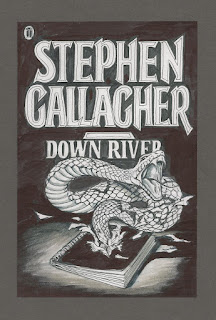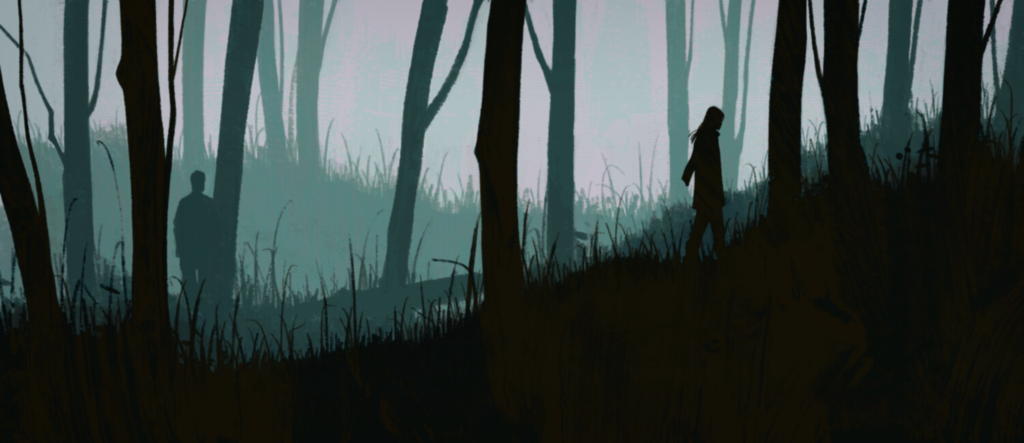 |
| Unused concept rough, New English Library |
I’ve been catching up on a couple of home-grown TV dramas that have been lurking for far too long on the PVR – no, I won’t name them – and they’ve reminded me of something I once heard David Puttnam say in an interview. He was contrasting British and American screenwriting practice using two exaggerated versions of the same story.
British version: a man wakes up in the morning. He goes down to breakfast. We see his house, his children are already at the breakfast table, we meet his wife. They talk about what he’s going to do that day. He says he’s going to the woods because of that thing they talked about last week, then he shaves, dresses, and drives the kids to school. Maybe there’s something on the car radio about snakes in the woods, but the children are arguing in the back so he turns it off. He calls his boss, says he’ll be late for work because of having to stop by the woods on the way. His boss chews him out about some big order they have to get fulfilled. He arrives at the woods, gets out of his car. We see him walking through the woods and then we see him carry out whatever mundane task he came here to perform. Now we see him walking back. Ouch! What was that? He catches sight of a snake slithering away. Later on…
(I’ve padded it more than Puttnam did, but you get the idea)
American version: A man’s out walking in the woods and a snake bites him in the ass.
There’s a certain breed of script editor whose notes seem to be concerned mainly with the so-called ‘shoeleather’ of a narrative. Why is this character in this location? How did they get there from where we saw them last? What do they do every day? Can we dig into their lives a bit more? Can we do more to explore this relationship? It’s dull stuff but they always want it in. So you get literally dozens of scenes where nothing of any actual consequence happens, doggedly paving the way for an eventual story point.
I don’t necessarily buy the whole English/American thing, but I do think that Puttnam’s storytelling point is spot-on.
It’s hard for a writer to hit the ground running. On the other hand it’s not engaging for the audience to have to watch you getting up to speed as you write your way into the characters and their world.
There’s a harsh but effective craft solution – write what you need to write, but then cut what the audience doesn’t need to see.
